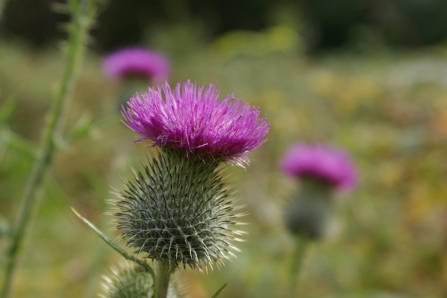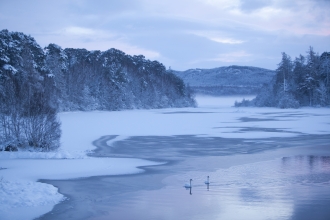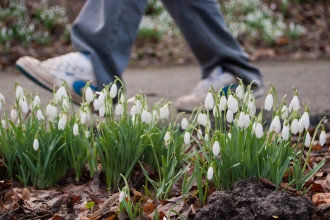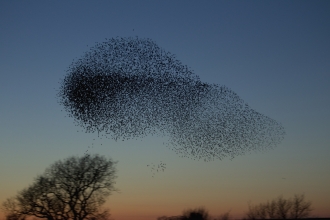Not all flowers wait until spring to unfurl their beautiful petals, instead putting on a show when we most need relief from the gloomy weather. If you aren’t sure which flowers grow in the winter, here are some to look out for.
Seven winter wildflowers to spot on your next walk
Katrina Martin / 2020VISION
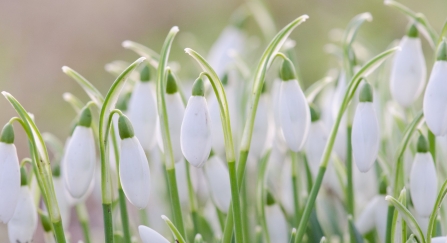
Katrina Martin / 2020VISION
Snowdrop
Before bluebells start carpeting our woodlands, snowdrops bloom to let us know that spring isn’t far away. Those delicate white petals are unmistakeable and a welcome sight on dull winter days, shining up from the floor of lightly shaded woodland areas, parks and gardens. They have a lovely Latin name: Galanthus nivalis, which translates as ‘milk flower of the snow’.
Snowdrops have a fascinating use in modern medicine. Along with other plants of the Amaryllidaceae family, they contain a substance called galantamine. It was first used in eastern Europe to treat memory loss in the 1950s, then became widely used in the UK to treat the symptoms of Alzheimer’s disease under the name of Reminyl.
Red campion
This wildflower’s name is a little misleading, as the flowers of red campion are actually bright pink. It usually blooms through to autumn but can be seen surprisingly late into the year, even over Christmas!
While you may see it brightening up roadside, woodlands or hedgerows on a winter’s day, spring is the time to see red campion in its prime. It starts to bloom just as bluebells finish flowering, but it isn’t uncommon to see the two plants flowering side-by-side for a few weeks, coating the woodland floor in a pink and blue carpet.
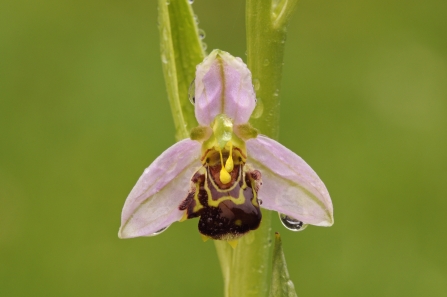
Dawn Monrose
Bee orchid
Bee orchids can appear in the most unlikely of places – even car parks! They’re incredibly beautiful and very clever, having evolved to look, feel and smell like a species of solitary bee. As the bee lands on the flower to try and mate with it, it actually ends up pollinating the orchid. Here in the UK though, bee orchids self-pollinate as the right bee species doesn’t live here.
While you won’t see bee orchids in flower during winter (this happens from June to July), you can find their rosettes on the grounds. Keep your eyes peeled on grasslands and roadside verges.
Perennial sow-thistle
Spotted a really tall dandelion? It is actually perennial sow-thistle, which has much longer stalks and bigger flowers than its zesty yellow cousin.
As a perennial plant it can grow throughout the year and has even been known to flower during winter. Look out for it brightening up roadsides, shingle, and the ground around rivers and streams.
Spear thistle
Did you know that some spear thistle plants can grow as big as small bushes? Though this hardy plant flowers primarily from July to October, it isn’t uncommon to spot it during a winter wildflower hunt, it’s fat purple flowers and spiky leaves making it stand out from other UK thistles. Look for it in pastures, on roadside verges and along field edges.
While some people see spear thistle as a weed, it is actually a fantastic plant for wildlife. Small copper butterflies visit the flowers for nectar and birds like goldfinches raid the seedheads.
Primrose
It might look delicate, but don’t be fooled. Primrose is a tough winter wildflower and blooms as early as late December through to May. It grows in damp, shady woodlands as well as grasslands and at the base of hedgerows.
Primrose is a favourite nectaring plant for brimstone and small tortoiseshell butterflies, and elsewhere in the country, is a food plant for the caterpillars of the rare Duke of Burgundy butterfly.
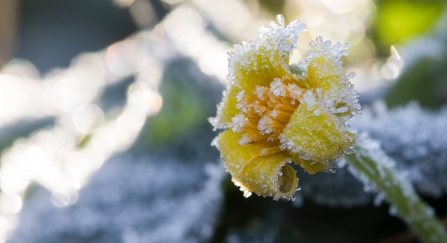
Chris Lawrence
Lesser celandine
Lesser celandine is a characteristic spring flower, covering woodland floors with a golden carpet between January and May. It looks like an oversized buttercup and is indeed a member of the buttercup family. It’s also a valuable source of nectar for early insects.
The beautiful celandine was enshrined in literary fame when it was mentioned in ‘The Lion, the Witch and the Wardrobe’: “Edmund saw the ground covered in all directions with little yellow flowers – celandines”.
Have you seen any winter wildflowers during recent walks? We’d love to see your pictures! You can send them to us on Facebook, Twitter or Instagram.


